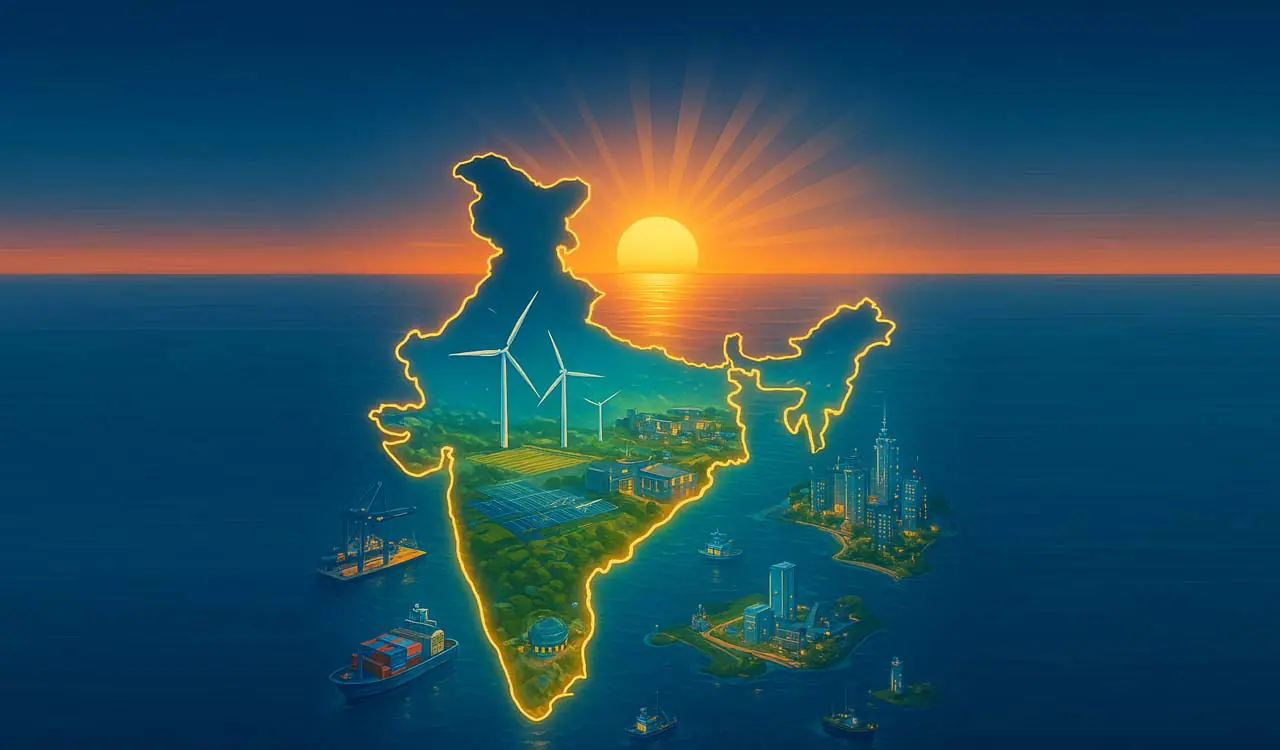Daily Editorial Analysis – 4 October 2025
Climate Finance for India’s Clean Energy Transition
India’s clean energy sector has attracted global attention and commendation, showcasing significant achievements like the addition of 24.5 gigawatts (GW) of solar energy capacity in 2024. This positions India as the third-largest contributor to renewable energy worldwide, following China and the U.S. The country has established itself as a key player in the renewable sector, aided by initiatives like the International Solar Alliance. However, India’s ambition is hindered by a glaring financial void. To fulfill its national and international climate commitments, India needs between $1.5 trillion and $2.5 trillion by 2030, yet current funding streams are inadequate.
Despite progress, particularly in employment—over one million jobs created in the renewable sector by 2023—funding is heavily skewed towards large corporations. Micro, small, and medium enterprises often lack access to climate finance due to high inherent risks. This necessitates a shift in financing strategies, diversifying instruments and leveraging public finance to attract private investment.
Strategies for bridging the climate finance gap include blended finance models combining public and private funding, instruments for reducing risks, and more accessible financial mechanisms for smaller entities. Additionally, innovative avenues like carbon credit trading and technological solutions such as Blockchain and AI can enhance financial transparency and assessments.
India’s success hinges on strategic financial diversification, which not only addresses climate obligations but also catalyzes sustainable economic growth.
Evolving Naval Dynamics after Operation Sindoor
The India-Pakistan rivalry has shifted towards maritime domains, particularly following the events of May 2025. This change marks a pivotal moment, with both nations enhancing their naval capabilities amid growing geopolitical influences like China and Turkey.
India has adopted a more assertive naval posture, characterized by the induction of new vessels and joint patrols with the Philippines, reflecting a strategic shift towards proactive maritime deterrence. Defense Minister Rajnath Singh’s comments indicate a willingness to escalate actions in response to Pakistan’s military developments, particularly around Sir Creek.
Conversely, Pakistan is strengthening its naval capabilities with new acquisitions like the Chinese-built Hangor-class submarine and ballistic missiles. This increasing military emphasis demonstrates Pakistan’s intention to complicate India’s naval superiority and maintain operational pressure.
The maritime theater presents unique challenges concerning escalation control. Naval deployments linger in contested waters longer than aerial forces, creating situations where disengagement becomes complicated. Memories from past conflicts, particularly the 1971 naval blockade, shape perceptions and escalate tensions in this domain, particularly surrounding crucial sites like Gwadar and Karachi.
The external influence of the People’s Liberation Army Navy (PLAN) and Turkey adds further complexity to the naval balance, with implications for crisis decision-making on both sides. As both countries reassess their naval doctrines in light of modern capabilities and technologies, there is potential for miscalculations if outdated perceptions persist.
Conclusion
India and Pakistan’s maritime posturing signifies an evolving chapter in their bilateral tensions, with the Indian Ocean emerging as a critical arena for competition. As both nations enhance their naval capabilities, the stakes for future confrontations rise, necessitating careful navigation of this challenging landscape. For India, the maritime strategy may serve dual roles—as a tool for early signaling or as a lever for escalation. Either way, the maritime frontier promises to become a focal point in their ongoing rivalry.





